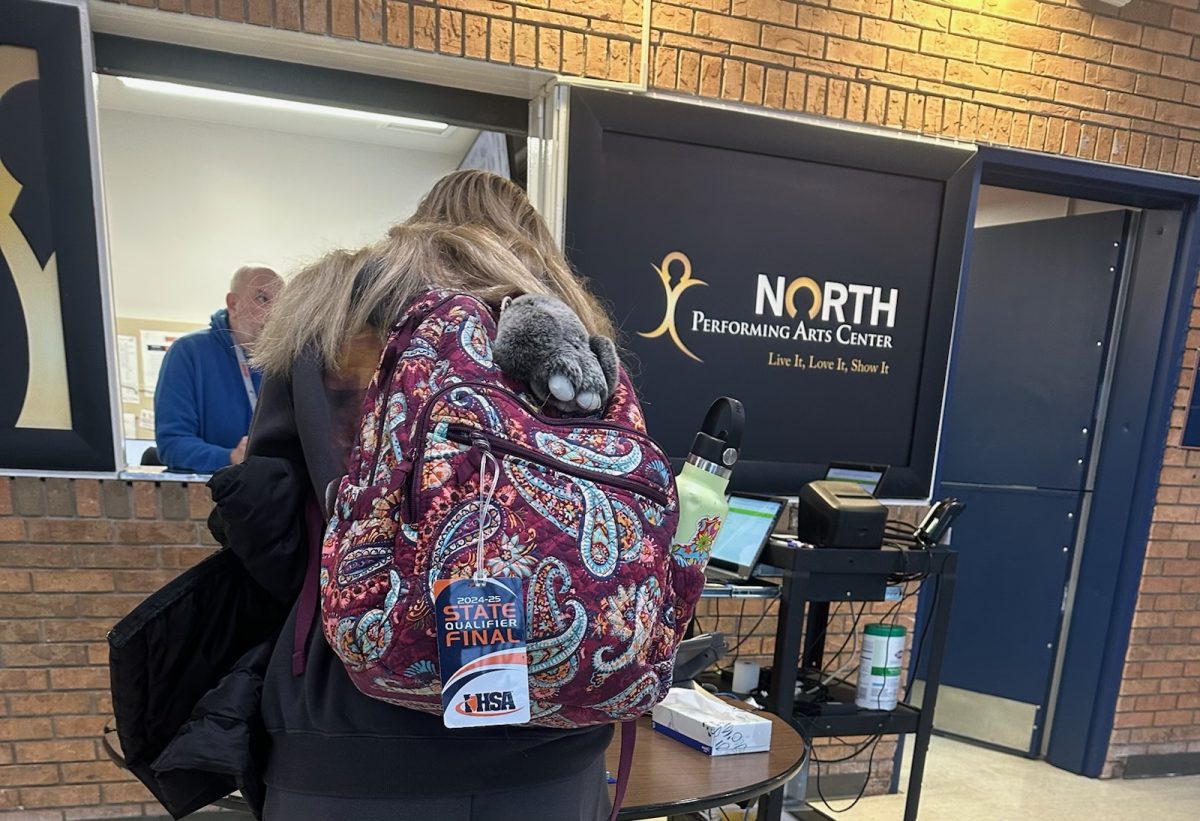Student services seeks to support students returning from depression and anxiety- related hospitalization
By Editor-in-Chief Allie Pecorin
Senior Kitty Sinclair-Harry woke suddenly and shot upright. A 24 – hour memory lapse meant that she could remember little about the events of the evening before. She had no recollection of the doctor at the ER who had told her family that this was her only option.
It took her a few moments to piece her location together. She finally knew where she was and it made her squirm.
“I remember feeling scared and angry,” Sinclair-Harry said. “Once I realized that I was at Linden Oaks, I was nervous.”
Though Sinclair-Harry left the inpatient treatment center six days later, the ongoing battle to cope with her anxiety and depression would follow her far beyond the walls of Linden Oaks.
Transitioning back to life at NNHS would take her time. It’s a transition she is still making.
Sinclair-Harry is just one in a statistically high number of students at NNHS who are being hospitalized for depression and anxiety related symptoms.
According to Student Services Director Jeff Farson, during the 2012-2013 school year, 78 students received treatments that prevented them from attending school. This is down sizably from the year before, in which NNHS saw 102 student hospitalizations. This school year has already seen 12 more. Farson also said these numbers are composed of all types of students, regardless of gender, perceived social standing, socioeconomic background, or other factors.
Farson said those in the guidance department are doing all they can to address the problem.
“We’re not ignoring it. We know it’s a problem. We admit that these are kids we need to provide additional service to,” Farson said.
According to Farson, the increased number in hospitalizations led administrators who work in student guidance to adjust organizations in order to give more assistance to students.
Farson said that the spike of hospitalizations in 2011-2012 pushed him and Karen Lemanski, Student Services Director at NCHS, to write a proposal for an additional position on each school’s guidance team. These individuals, now the deans of interventions, were put in to place to assist students who have been hospitalized as they transition back to life at school and to intervene before hospitalization becomes necessary.
Farson is optimistic that the drop in student hospitalizations during the 2012-2013 school year could be in part due to the implementation of these deans.
“There seems to be a correlation,” Farson said. “Whenever you have additional people tackling a problem, the problem should start to get better.”
The data between NNHS and NCHS is strikingly similar. NCHS saw 98 hospitalizations compared to NNHS’ 102 in 2011-2012. And, according to Farson, administrators are having a difficult time determining why the numbers are so high.
“Everyone wants a reason,” Farson said. “There isn’t an answer.”
Though other schools in surrounding districts were contacted for their number of hospitalized students, all declined to comment except Wheaton Warrenville South, who noted their hospitalization rate to be approximately 50 students annually. This is in a smaller population of students than that of district 203 high schools.
Allison Cotton, who is a clinical therapist at New Directions Clinical Therapy Inc., said she believes Naperville may be a community that tends to push mental illness to the background, and she believes this could cause students to suffer.
“Sometimes, I think there are pockets of populations that have a hard time addressing mental health issues,” Cotton said. “[But] it doesn’t go away. There’s nothing magical.”
Farson believes that this could be one possible explanation as well.
“I certainly believe that this is a possibility, but I am not prepared to say that this is the ‘silver bullet’,” Farson said in an email. “So many variables – situational pressures, mental illness, drug or alcohol use, and environmental factors have been taken in to consideration.”
That, combined with what Cotton described as a pressure to meet social expectations, could be causing students to mask their symptoms until they are deeply entwined.
“It could be that that pressure means that [teenagers] hide any symptoms,” Cotton said.
As for Sinclair-Harry, she takes it day-by-day and relies on the support NNHS provides for students in her situation.
She continues with her recovery each day, and she finds solace in a new group that she and her mother helped found at the Compass Church.
Sinclair-Harry’s group, a teen organization called The Landing, is based off of Celebrate Recovery, a faith-based recovery group. The Landing works closely with teens as they journey towards recovery.
“Being a leader of it has helped,” Sinclair-Harry said. Hospitalization and outpatient treatment provided the first stepping-stones toward helping her heal.
“It’s a part of who I am,” Sinclair-Harry said. “Everything I’ve done has made it so I’m better prepared.”













Morgan Benbow-Niemier • Nov 13, 2014 at 9:30 pm
I am also glad this was addressed because it seems like this is a consistent event that happens. There are a lot of people who have some form of metal illness, and it is important to let those people know that they can always get help from the staff at North.
I actually have anxiety, which triggers my depression, and I do vividly remember my parents signing me into Linden Oaks. I too was scared and nervous, and I desperately wanted to go home, however, I couldn’t. I stayed at the hospital for four days and on the final day, I was released, but I knew it wasn’t over. Eventually, I was put into an anxiety program which helped me to cope and control the anxiety. I stayed in that program for two months and it wasn’t until in April that I had graduated from the program and was going to school full-time.
Sometime after I started high school, I discovered that music has been helping me cope with my anxiety and it has helped me get out of some pretty dark places. Since my discovery, I have been involved with the music program all four years. I’m glad I stuck with music because without music life would B-flat.
I choose to write about my anxiety because I strongly believe that sharing your experiences will help let others know that their not alone and that in the end, things do get better.
Hannah Novak • Mar 11, 2014 at 10:02 pm
I’m glad this was addressed. A ton of people at the school have some form of mental illness, and it’s really important for those people to know that things will get better and that there is help available.